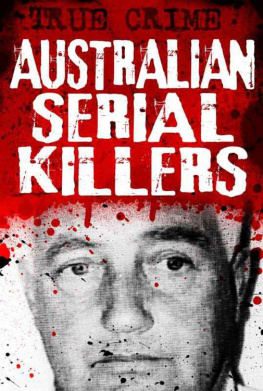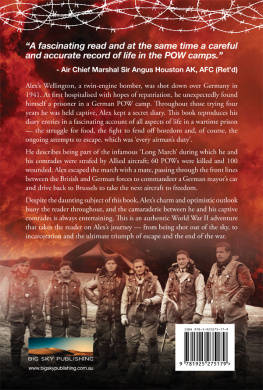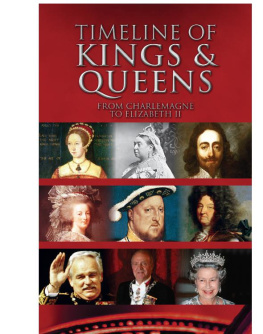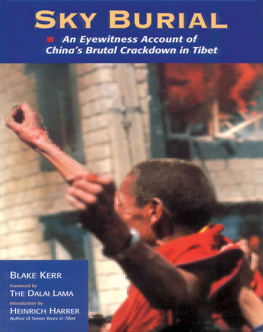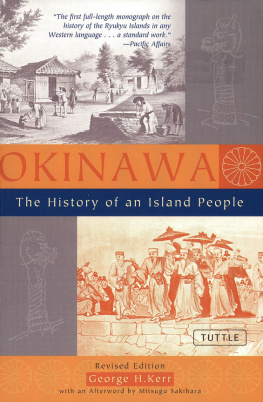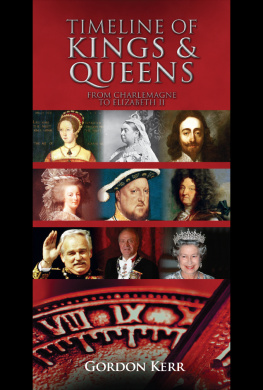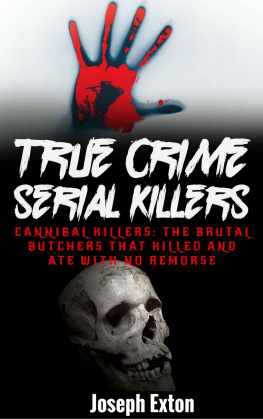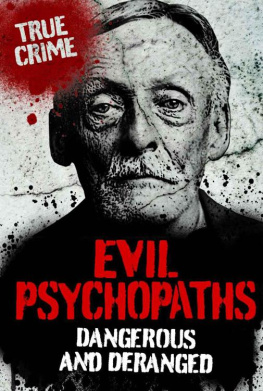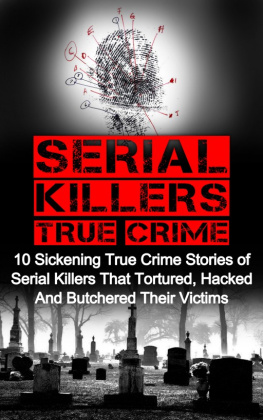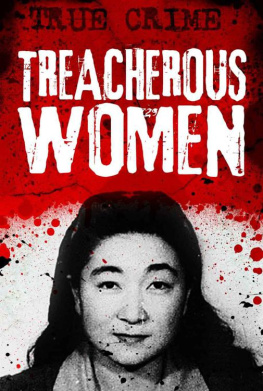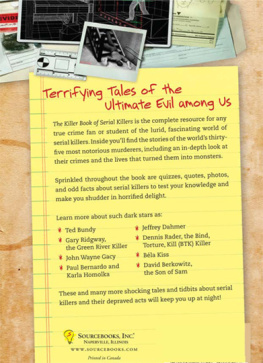Kerr - Australian Serial Killers: The rage for revenge
Here you can read online Kerr - Australian Serial Killers: The rage for revenge full text of the book (entire story) in english for free. Download pdf and epub, get meaning, cover and reviews about this ebook. year: 2011, publisher: Canary Press, genre: Detective and thriller. Description of the work, (preface) as well as reviews are available. Best literature library LitArk.com created for fans of good reading and offers a wide selection of genres:
Romance novel
Science fiction
Adventure
Detective
Science
History
Home and family
Prose
Art
Politics
Computer
Non-fiction
Religion
Business
Children
Humor
Choose a favorite category and find really read worthwhile books. Enjoy immersion in the world of imagination, feel the emotions of the characters or learn something new for yourself, make an fascinating discovery.
- Book:Australian Serial Killers: The rage for revenge
- Author:
- Publisher:Canary Press
- Genre:
- Year:2011
- Rating:4 / 5
- Favourites:Add to favourites
- Your mark:
- 80
- 1
- 2
- 3
- 4
- 5
Australian Serial Killers: The rage for revenge: summary, description and annotation
We offer to read an annotation, description, summary or preface (depends on what the author of the book "Australian Serial Killers: The rage for revenge" wrote himself). If you haven't found the necessary information about the book — write in the comments, we will try to find it.
Kerr: author's other books
Who wrote Australian Serial Killers: The rage for revenge? Find out the surname, the name of the author of the book and a list of all author's works by series.
Australian Serial Killers: The rage for revenge — read online for free the complete book (whole text) full work
Below is the text of the book, divided by pages. System saving the place of the last page read, allows you to conveniently read the book "Australian Serial Killers: The rage for revenge" online for free, without having to search again every time where you left off. Put a bookmark, and you can go to the page where you finished reading at any time.
Font size:
Interval:
Bookmark:

Australian Serial Killers
The rage for revenge
G ORDON K ERR

To check out more titles by Canary Press visit www.canarypress.co.uk
Brought to you by KeVkRaY
Contents
Eric Edgar Cooke
The city of Perth in Western Australia lies more than 1,600 miles away from the nearest major city, Adelaide. Perhaps, back in the 1960s, it was this isolation that made its inhabitants so relaxed. It was the kind of place where people rarely bothered to lock the doors of their houses or their cars; they were friendly and trusted each other, always ready to lend a helping hand.
That all changed one summer night in 1963 when Eric Edgar Cooke unleashed a one-man crime wave, a spree of senseless killing that shocked Perth, changing the city and its inhabitants forever.
Cooke had already killed, in 1959, when he broke into a house owned by a divorced woman who lived alone. As she slept in her bedroom, he searched the rest of her house for cash and valuables. Finding none, he entered the bedroom but was surprised to find the woman awake. She leapt out of bed and struggled with him until he fumbled in his pocket for the small knife he carried in case of emergencies. He plunged it into her body several times, killing her.
He had never had much of a chance. Born in Perth in 1931, with a cleft palate, he underwent a successful operation to improve his looks. But his speech was never quite right and he was inevitably bullied at school. Things were not much better at home. His father was a violent alcoholic who beat his wife, son and two daughters regularly with both fists and a belt. His father hated Eric so much that if his mother seemed to be paying too much attention to him, she was beaten for it.
Needless to say, he became a withdrawn, quiet child, with few friends. He also began to suffer from headaches and blackouts which were not helped by a bad fall from a bicycle and injuries received when he unwittingly dived into a pool of shallow water when he was fourteen. He was examined by doctors who, initially suspecting some kind of brain damage, carried out an exploratory operation. None was found.
Cooke was kicked out of a number of schools for disruptive behaviour and by the age of fourteen had dropped out of the education system altogether. He found work, but as his father often spent his wages on booze, all his earnings had to be given to his mother to help feed and clothe herself and his sisters.
Life went from bad to worse. At sixteen, he made the mistake of trying to protect his mother from one of his fathers drunken beatings. He ended up in hospital for three weeks, telling doctors that he had been in a fight with other boys.
Eventually, he was called up to do his national service and finally learned something. Unfortunately for Perth and a number of its inhabitants, it was how to use a rifle.
He had already begun his criminal career before going into the army. Giving all his earnings to his mother left him little to live on and he had resorted to housebreaking to bolster his wages. It was easy with all those unlocked doors. While the occupants watched television, he would sneak in and raid their purses and wallets. Not only would he steal, however. He became a peeping tom, enjoying watching women get ready for bed or making love with their husbands.
Demobbed from the army, he carried on where he had left off, breaking and entering and sometimes, when he got bored or found nothing worth stealing, vandalising the house he was in or even setting fire to it. Eventually, however, he was caught, his fingerprints connecting him with numerous burglaries. He went to prison for three years.
In 1953, aged twenty-two, he married an eighteen-year-old British immigrant by the name of Sally and he would have seven children with her, although even now his bad luck continued one of his sons was born with a developmental disability, while a daughter was born without a right arm. He was working, however, as a truck driver, although at the weekend he pursued his criminal activities to bring in some extra cash.
The law caught up with him again in 1955 when he was given two years hard labour for stealing a car. In 1960, having got away with the killing of the divorcee, he returned to prison. In spite of his record, however, the police believed him to be harmless.
How wrong they were was about to become evident.
That summer Saturday night in 1963 at around two in the morning, Nicholas August, a married man, was sharing a drink in his car with barmaid Rowena Reeves. Suddenly, Rowena thought she saw a man and August leaned out of the window and told him to Bugger off! thinking he was a peeping tom. When August chucked an empty bottle at the figure in the dark, Rowena noticed that the man had a gun in his hands, and was alarmed to see that it was aimed at them. She pushed her companions head down as a bullet whizzed into the car, grazing his neck and thudding into her forearm. August fumbled with the keys and switched on the engine as quickly as he could. He pushed his foot down hard on the accelerator, gunning the car past the shooter and almost hitting him. By the time they reached the local hospital, Rowena had slipped into unconsciousness through loss of blood, but, fortunately, both survived.
The night was still young, however, and Eric Cookes next victim wasnt so lucky.
An hour after Nicholas August and Rowena Reeves had been attacked, a couple of miles away, fifty-four-year-old George Walmsley was awakened by the sound of his doorbell. Puzzled as to who would be at the door at this time in the morning, he got out of bed, went to the door and opened it. Immediately, a bullet smashed into his forehead. He was dead before he hit the ground.
A little later, at a boarding house located just around the corner from where George Walmsley had died, a nineteen-year-old student, John Sturkey, who was sleeping on the buildings verandah was discovered shot between the eyes.
But it was not over yet. When Brian Weir failed to show up for work at the Surf Life Saving Club next morning, one of his colleagues went to get him out of bed, thinking he had merely overslept. He found Weir in bed alright, but his sheets were soaked in blood and there was a bullet hole in his forehead. He lived, but suffered serious brain damage before dying three years later.
The press went crazy and a large reward was offered for information leading to the arrest of the person they were calling the Maniac Slayer. It was the random nature of the shootings that terrified people most. They had no idea where and when he would strike next and took to sleeping with loaded guns by their beds.
All went quiet for three weeks.
Joy Noble was making breakfast one Saturday morning in her West Perth home when, glancing out of the kitchen window, she was horrified to see a naked young woman lying on the grass in her garden. Initially, she feared that it was her daughter, and first made sure that she was safe and well before investigating. The body was that of Lucy Madrill, a twenty-four-year-old social worker who lived in a neighbouring street. She had been raped, strangled and, bizarrely, dumped on Joy Nobles lawn. The police were flummoxed, but, with absolutely no evidence to support the theory, claimed that the murderer must have been an Aborigine.
Cooke laid low for the next six months before shooting dead, on 10 August 1963, an eighteen-year-old science student, Shirley McLeod, leaving the child she had been babysitting unharmed. The gun was different, but the investigating officers had no doubt that their man had just claimed his fourth victim. They began to fingerprint every male in Perth over the age of twelve and there was talk of closing down the alleys that ran down the backs of houses. Doors in the city were now firmly locked at night.
Next pageFont size:
Interval:
Bookmark:
Similar books «Australian Serial Killers: The rage for revenge»
Look at similar books to Australian Serial Killers: The rage for revenge. We have selected literature similar in name and meaning in the hope of providing readers with more options to find new, interesting, not yet read works.
Discussion, reviews of the book Australian Serial Killers: The rage for revenge and just readers' own opinions. Leave your comments, write what you think about the work, its meaning or the main characters. Specify what exactly you liked and what you didn't like, and why you think so.

